A TECHNICAL REPORT ON THE DESIGN OF AN LDR BASED AUTOMATED LIGHTING SWITCH ELECRICAL/ELECRONICS ENG
1
About :
1.1 Introduction
1.2 Basic Principle
- Technical Approach
- 2.1 Requirements/ components required and specifications
- 2.2 Working and calculations (including the Proteus schematic)
- 2.3 C# program of basic calculations
- 2.4 Advantages and Disadvantages
- Conclusion and future scope
1.1 INTRODUCTION
We need to save or conserve energy because most of the energy sources we depend on like
coal and natural gas can’t be replaced. Once we use them up, they’re gone. Saving power is
very important instead of using power in unnecessary times it should be switched off. In any
city “STREET LIGHT’’ is one of the major power consuming factors. Most time we see street
light controller has an LDR which is used to detect the ambient light. If the ambient light is
below a specific value the lights are turned ON.
A light dependent sensor is interfaced to a microcontroller. It is used to track the sun light
and when the sensors goes dark the led will be made ON and when the sensor founds light
the led will be made OFF.
This light control system is a simple yet powerful concept, which uses transistor as a switch.
It automatically switches ON lights when the sunlight goes below the visible region of our
eyes. This is done by a sensor called Light Dependent Resistor (LDR) which senses the light
actually like our eyes.it automatically switches OFF lights whenever the sunlight comes
visible to our eyes.
1.2 BASIC PRINCIPLE:
The automatic lightning system operates on a 12 V DC supply. The automatic light controller
has a photoconductive device whose resistance changes proportional to the extent of
illumination which switches ON or OFF the LED with the use of a transistor as a switch. Light
dependent resistor, a photoconductive device has been used as the transducer to convert
light energy into electrical energy. The centre point of the circuit is that the light dependent
resistor on illumination or darkness switches the transistor between the cut-off region or
saturation region and switches OFF or ON the LED.
2.1 COMPONENTS REQUIRED:
LDR(R1)
Resistor: R2 -100k, R3- 10k(2 combined in parallel), R4- 2.2K
Transistor: Q1 – BC 547, Q2 – BC337
LED bulbs
12 V. DC supply or Lithium ion batteries
2.1.1 SPCIFICATIONS OF COMPONENTS
LIGHT DEPENDENT RESISTOR (LDR)
LDRs are very useful especially in light/dark sensor circuits. Normally the resistance of an
LDR is very high, sometime as high as 1M ohms, but when they are illuminated with light,
resistance drops dramatically. Electronic sensors are the devices that alter their electrical
characteristics in the presence of visible or invisible light. The best known devices of this
type are the light dependent resistor (LDR), the photo diode and the phototransistors
The LDR device consists of a pair of metal film contacts separated by a snakelike track of
cadmium sulphide film, designed to provide the maximum possible contact area with the
two metal films. The structure is housed in a cedar plastic or resin case, to provide free
access to external light. practical LDRs are available in variety of sizes and packages styles,
the most popular size having a face diameter of roughly 10mm. Practical LDR is shown in
below figure;
Fig. 1.1: Practical LDR
TRASISTORS BCS47
Is an NPN bipolar junction transistor. A transistor stands for transfer or
resistance commonly used to amplify current. A small current at its base controls a larger
current at collector and emitter terminals. BC547 is mainly used for amplification and
switching purposes. It has a maximum current gain of 800.
For amplification applications, the transistors terminal is biased such that it is partly ON for
all input conditions. The input signal at base is amplified and taken at the emitter. BC547 is
used in common emitter configuration for amplifiers. For switching applications, transistor is
biased so that it remains fully ON if there is a signal at its base. In the absence of base signal,
it goes completely off.
RESISTORS
Is an electrical component that reduces the electric current. The resistor’s ability to
reduce the current is called resistance and is measured in units of ohms (symbol: Ω).
LED (LIGHT EMITTING DIODE)
A light emitting diode (LED) is a two-lead semiconductor light source that resembles
a basic pn-juction diode, except that a LED emits light. Electrons are able to recombine with
holes with holes within the device, releasing energy in the form of photons. This effect is
called electroluminescence, and the colour of the light (corresponding to the energy of the
photon) is determined by the energy gap of the semiconductor.
Characteristics of LDR
LDR’s are light dependent devices whose resistance is decreased when light falls on
them and that is increased in the dark. When a light dependent resistor is kept in dark, its
resistance is very high. This resistance is called DARK RESISTANCE.
Applications of LDR
Lightning switch
camera shutter control: the LDR would be used to measure the light intensity which
then adjusts the camera shutter speed to appropriate level
used in street light applications
used in domestic applications
2.2 WORKING AND BASIC CALCULATIONS:
Diagram construction:
As shown in the figure 1.2 below,
the positive terminal of the battery is connected to the
Anode part of the LED and to a terminal of the resistors R1, R2, R3 and the negative
terminal is connected directly to the ground. Resistor R1 (5k) is connected directly to the
collector of transistor Q7 (BC547), resistor R2 (100k) is connected to the base terminal of
the same transistor Q7 (BC547) and terminal 1 of the LDR1. Terminal 2 of the LDR1 is
directly connected to the ground. The cathode of the LED’s is connected to the collector
terminals of their respective transistors (BC547). The emitters of the transistors BC547 is
connected directly to the ground.
WORKING:
As seen in the diagram, if it’s night time there is no light on the LDR. This means that the
resistance of LDR is high and there is no current flowing in the LDR. The transistor BC547
(Q7) will turn ON due to the fact that the transistor is getting a positive supply from
resistance R2 (100k). due to turn ON of the transistor Q7 (BC547) the collector terminals
draws in large value of current and the emitter is connected directly to the base of transistor
Q12 (BC337) which also triggers it ON to allow a larger current to flow through the collector
of transistor Q12 (BC337) and the emitter of this transistor is connected to the emitter. The
emitter of the transistor Q11 (BC547) is then connected to the emitter terminals of the
remaining transistors and then the LED’s are powered up in the night.
As soon as morning comes the light comes on the LDR, the resistance of the LDR will
decrease and current flow will start from it. Due to the low resistance in the LDR, the base
terminal of the transistor Q7 (BC547) will get ground supply and the transistor will be OFF.
There won’t be supply to the base terminal of the transistor Q7 (BC547).
BASIC CALCULATIONS;
To calculate the base current needed to trigger ON the transistor Q7 (BC547):
Vcc = 12 V. DC
Resistance (R2) = 100mA
Therefore current delivered to the transistor Q7 (BC547):
I = 𝒗
𝒓
=
𝟏𝟐
𝟏𝟎𝟎𝟎𝟎𝟎
= 𝟎. 𝟏𝟐mA
So let’s calculate the maximum base current of the transistor using formula:
Given for transistor Q7 (BC547): β = 100 (for BC547), 𝒊𝒄 = 100mA,𝒊𝒃 =?
Using the formula: 𝑰𝒄 = β𝑰𝑩
Therefore 𝑰𝑩 =
𝑰𝒄
𝛃
=
𝟏𝟎𝟎 𝒎𝑨
𝟏𝟎𝟎
= 1mA.
So we have seen above that the current delivered (0.12mA) is still permissible to allow the
transistor Q7 (BC547) to function properly. Below is the written program for finding the
base current if the amplification factor is known and collector current is known:
2.3 C# PROGRAM OF BASE CURRENT CALCULATION OF BC547
using System;
namespace Feg390
{
class Program
{
static void Main(string[] args)
{
Swep1 group6 = new Swep1();
}
}
}
using System;
namespace Feg390
{
class Swep1
{
public Swep1()
{
FindBaseCurrent(100, 0.1);
}
static void FindBaseCurrent(double amplificationFactor, double collect
orCurrent)
{
double B = amplificationFactor;
double Ic = collectorCurrent;
double Ib = (Ic/B);
Console.WriteLine("The Base current is= " + Ib);
}
}
}
2.4 ADVANTAGES AND DISADVANTAGES
By using this automatic lighting switch, we can reduce energy consumption because
the manually operated light (street light) are not switch off properly when the
sunlight comes and also are not switched on properly before sunset.
Low cost
Automated Operation
Low power consumption
very flexible
Easy to manufacture in sunny and rainy days, but on and off time differ. This is one
of the major disadvantages of using manual operation for switching the street light
system.
3.0 CONCLUSION
This automatic light control switch (street lightning) is more effective in case of cost,
manpower and security as compare with today’s running complex light controlling systems.
Automatic light control system puts up a very user friendly approach.
After designing the circuit which controls the light of the street as illustrated in sections
above, we see that LDR sensor and the photoelectric sensors are the two main conditions in
working the circuit. If the two conditions have been satisfied the circuit will do the desired
work according to the specific program
FUTURE SCOPE
We can save energy for the future use and we can control the losses of power. We can
implement this project for the home lamp or night lamp of the room.
Tags :
Their limit for today is $0!
More Videos
@ctime: 0.0176
@devann: 0.0145
@stemgeeks: 0.0095
@opb: 0.0063
@babytarazkp: 0.0040
@tfranzini: 0.0037
@stemline: 0.0020
@slider2990: 0.0018









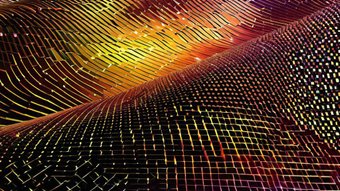

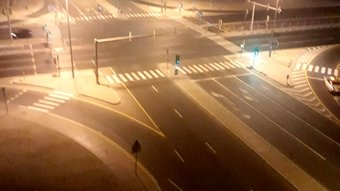




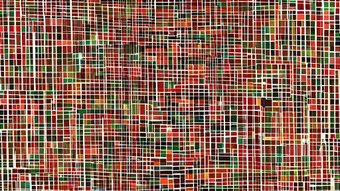





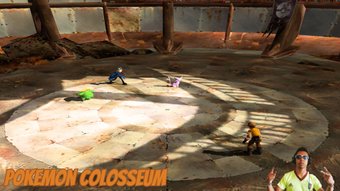






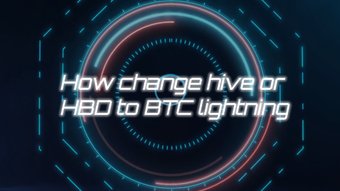
Comments:
Reply:
To comment on this video please connect a HIVE account to your profile: Connect HIVE Account